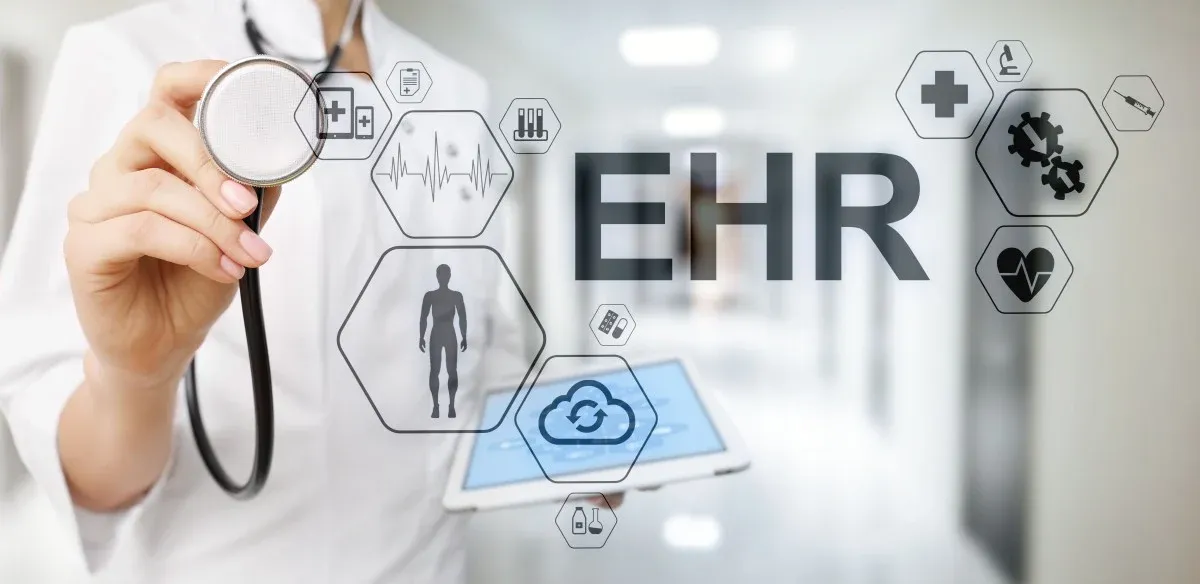How Computer Vision Revolutionizing Electronic Health Records For Healthcare

Table of Contents
- Introduction
- Computer Vision in Electronic Health Record (EHR) Analysis
- Model Building
- How Labellerr Helps
- Frequently Asked Questions
Introduction
Sarah, 42, has suffered from constant migraines for years, which cause throbbing pain and debilitating nausea.
Despite countless doctor visits and doses of medication, relief seemed unattainable.
This condition of her affected her carrer,family etc.
According to the Migraine Research Foundation, approximately 12% of people in the United States have migraines, with women more than three times as likely as men.
For Sarah, this statistic wasn’t just a number—it was a fact.
Wanting a solution, Sarah's neurologist, Drs. Patel, recommended an alternative: integrating computer vision technology into Sarah’s electronic health records (EHR) system.
The idea was to analyze medical imaging, such as brain scans and MRI results, and use advanced diagnostic programs to identify potential triggers for Sarah’s migraines
Skeptical at first, Sarah agreed to give it a try.
The addition of computer vision to Sarah’s EHR helped Drs. Patel to detect subtle abnormalities in her previously undetectable brain scans.
By analyzing extensive imaging data and linking it to Sarah's medical history, the system found an abnormal nerve previously unknown—probably caused her migrane.
The American Migraine Foundation reports that up to 50% of migraine sufferers go undiagnosed and untreated.
Thanks to computer vision, Dr. Patel was able to develop an individualized treatment plan for Sarah, incorporating medication modifications, lifestyle modifications, and targeted therapies to address the underlying neurological problems.
Each follow-up visit , he noticed a gradual improvement in his symptoms—both the frequency and severity of his migraines decreased
The integration of computer vision technology into EHRs in healthcare is transforming patient care, enabling faster detection, more accurate diagnosis and personalized treatment strategies.
According to a study published in the Journal of the American Medical Association in the sense that it has the potential to improve diagnostic accuracy by up to 30%.
Lets take a closer look on how CV is enhancing EHR.
Computer Vision in Electronic Health Record (EHR) Analysis
/1st.webp)
- Computer vision improves disease detection by quickly spotting patterns in medical images, decreasing human error. For example, it improves breast cancer detection via mammography analysis.
- During surgical procedures, computer vision systems automate documentation processes, decreasing errors and allowing healthcare staff to concentrate on patient care.
- Computer vision eliminates errors in patient identification, avoiding potentially damaging treatment blunders and legal obligations for healthcare facilities.
- By alerting authorities to probable accidents or safety procedure violations, computer vision technology helps to create a safer healthcare environment by lowering incident response times.
- Computer vision accelerates medical research procedures, allowing for speedier illness identification and treatment development without bias, resulting in more effective healthcare outcomes.
Model Building
Data Collection and Preprocessing
- Gather EHR data from reliable sources, ensuring data quality and adherence to privacy regulations (e.g., HIPAA).
- Preprocess the data to handle missing values, outliers, and inconsistencies. This may involve data cleaning, normalization, and feature engineering.
- Select relevant features from the EHR data that are informative for the model's objectives.
- Engineer new features if necessary, such as aggregating patient data over time periods or extracting meaningful patterns from text-based clinical notes.
- If dataset isn't annotated, use specialized annotation software or platforms to streamline and maintain consistency.
- Either a manual process or specialist annotation tools like Labellerr can be used for this.
/2.webp)
Model Selection
- Choose appropriate machine learning algorithms or statistical models based on the nature of the problem and the characteristics of the data.
- Common models for EHR analysis include logistic regression, decision trees, random forests, support vector machines, gradient boosting, and deep learning models.
Model Training
- Split the dataset into training, validation, and test sets to evaluate model performance.
- Train the selected models using the training data, tuning hyperparameters as necessary to optimize performance.
Model Evaluation
- Evaluate model performance using appropriate evaluation metrics, considering factors such as accuracy, precision, recall, F1 score, ROC-AUC, and calibration.
- Perform cross-validation to assess model generalization across different subsets of the data.
Interpret-ability and xplainability
- Ensure that the model's predictions and insights are interpret-able and explainable to healthcare professionals.
- Use techniques such as feature importance analysis, SHAP values, and model-agnostic methods for interpretability.
Validation and Deployment
- Validate the model's performance on independent datasets or in real-world clinical settings.
- Deploy the model in a secure and scalable environment, integrating it into existing healthcare systems or workflows.
Monitoring and Maintenance
- Continuously monitor model performance and re-calibrate as necessary to account for changes in patient populations, healthcare practices, or data distributions.
- Ensure compliance with regulatory requirements and ethical standards throughout the model's lifecycle.
How Labellerr Helps
Imagine you have lots of pictures and videos, and you want the computer to learn what is in each of them. Labellerr makes this easy!

Here's how it works:
(i) Connect your pictures and videos: Labellerr can take your pictures and videos from places like AWS, GCP, or Azure and put them in one easy-to-use platform.
(ii) Create and manage projects: Labellerr helps you organize your work. You can tell it what to focus on, like ner in medical.
(iii) Labeling engine: Labellerr has a great labeling engine. It helps you mark and describe things in the pictures, like symptoms, disease etc.
It can do this super fast, saving a lot of time and money.
(iv) Smart quality check: Labellerr also checks if the labels (like symptoms, disease etc.) are correct.
It does this using its smart brain and the information it learned from your labeled pictures.
(v) Connect to AI engines: Once Labellerr finishes, you can use what it learned with other computer programs to make them smarter in recognizing texts stating symptoms.
You can export the information in different formats like CSV or JSON.
So, Labellerr is a platform that helps you teach computers to recognize faces easily and quickly!
Computer vision has the potential to revolutionise EHR analysis with careful planning, teamwork, and commitment to best practices, allowing patients throughout the world to get more personalised, efficient, and accessible care.
Frequently Asked Questions
Q1.How is computer vision used in healthcare?
Healthcare professionals utilise computer vision to analyse medical images, monitor patient conditions, aid with surgical procedures, and automate administrative duties.
It aids in duties such as illness diagnosis using X-rays and MRIs, monitoring patient movements and vital signs, directing surgical instruments during procedures, and managing medical records using image recognition and classification.
Q2.What technological advancements are revolutionizing healthcare?
Artificial Intelligence (AI) and machine learning are enabling more accurate diagnostics and personalized treatment plans by analyzing vast amounts of medical data.
Telemedicine platforms allow patients to consult with healthcare providers remotely, improving access to care and reducing unnecessary hospital visits.
Wearable devices and mobile health apps empower individuals to monitor their health in real-time, promoting preventive care and early intervention.
Additionally, advancements in robotic surgery are enhancing precision and reducing recovery times for patients undergoing complex procedures.
These innovations are reshaping the healthcare landscape, offering greater efficiency, accessibility, and quality of care.

Simplify Your Data Annotation Workflow With Proven Strategies
.png)


